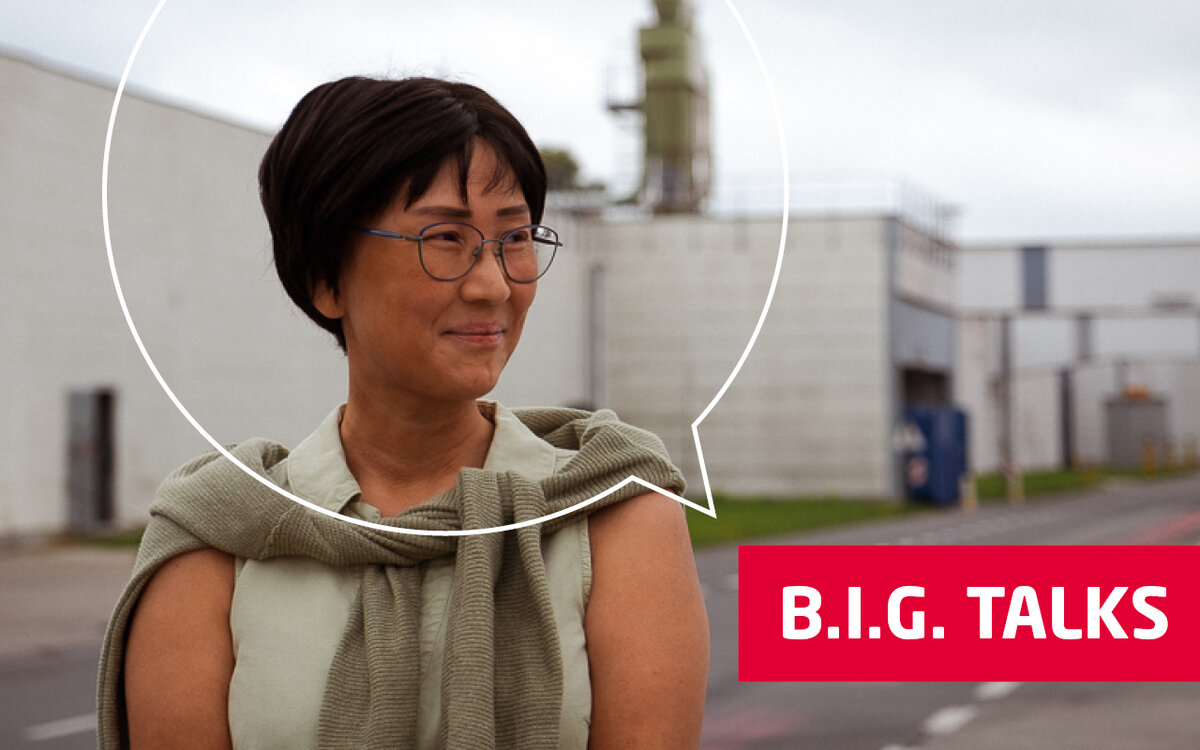In this series, we meet up with inspiring B.I.G. experts. They each have a distinct vision of what tomorrow’s (business) world could and should look like. Normally, they prefer to stay behind the scenes. But for B.I.G. Talks, it’s all cards on the table. Anna-Lena Larsson, Intellectual Property Manager, sits down to discuss a topic that might not be well-known, but is a part of all of our lives.
Just like most people, I have a small grasp of how intellectual property and patents work, without really knowing the mechanics behind it. But according to Anna-Lena Larsson, for most people it’s not necessary to understand IP in order to go on with their everyday life. “However, if you work for a manufacturing company, you need to know when intellectual property affects your daily job and who to contact in case of questions. I think all employees should get a basic training on IP.”
A common misconception is that patents are only a legal and administrative thing, but in truth, they’re much more technological. Let’s try to scratch the surface of intellectual property and the future of patents.
How did you get into intellectual property in the first place?
Anna-Lena: “I have a technical background, and this is necessary when you work with the patent content, because a patent is a technical solution that is described in a legal language. I studied engineering physics and I did a PhD on electrochromic materials. I actually came to Belgium to do further work on these materials in industry. After some years I changed job and this is when I entered the world of patents and IP, and I was hooked! Since April 2023 I’ve been part of the IP team at B.I.G.. Here I get the opportunity to work with the business aspects of IP, and I really enjoy it.”
What are the main trends in the world of Intellectual Property today?
Anna-Lena: “If we talk about IP management, I’d say that one trend is to look anywhere in the organization for intellectual assets that could potentially be turned into IP. A conventional approach would be to look for new inventions in improvements of your core technology. With an intellectual asset management approach you could instead go broader and look for new inventions in the business ecosystem around that technology. And if could identify an aspect or version of the invention that provides synergy effects when you combine it with your core technology, then you have a very good candidate for IP protection.
If we on the other hand talk about which fields are trending in IP coverage we could turn to patent statistics, and we’ll find data that indicates growth in artificial intelligence, internet of things, blockchain, renewable energy and biotechnology – so very familiar topics today."

TECHNOLOGY, NOW AND THEN
In an increasingly digital and interconnected world, how has technology transformed the way we create, share and protect intellectual property?
Anna-Lena: “A big leap was taken when the world went digital - suddenly there were a number of tools available that supported the management of IP. We got machine translation tools that helped to mitigate the problems of language barriers, at least to some extent. The introduction of AI has made the patent business taking another leap because it can help us to find solutions and even new inventions. - And, by the way, could AI be named as inventor of a patent? Basically all countries say no. -
However, while AI most probably will provide valuable help in my work, I’m worried about its uncontrolled development. Some years ago, I worked on a patent application on GANs (Generative Adversarial Networks) which in principle consists of two machine learning algorithms that train each other to solve a problem. The good results obtained in that specific case gave me an eerie feeling. Experts in the field of AI say we’re at a point of no return to get control over AI, so I really hope we get it right.”
Do you believe that companies will work together more often in the future on innovation?
Anna-Lena: “Yes, I think the trends of using AI, and methodologies like intellectual asset management, will push players to look for inventions further away from their own field. So bringing in external competence will probably be an increasing activity. And when doing so, we must have a high awareness of how to deal with confidentiality and make sure we safeguard our intellectual property.”
PATENTS IN THE OFFICE
What will the world of intellectual property look like in 10 to 20 years?
Anna-Lena: “The world of IP is still quite compartmentalized since it’s separated by national laws, geographical distances and different languages. I think we will see technical improvements to help us mitigate these frustrations, such as tools for smoother digital collaboration and better translation software.
One intriguing field is IP in the Metaverse. There are already patent applications that deal with the interface to the Metaverse (for example virtual reality input devices, or digital versions of existing physical items). Will our current laws on IP be able to fully function in the Metaverse? Or would the Metaverse get its own jurisdiction? I do believe we will see more of the Metaverse in society, and then the topic of IP in this artificial world is inevitable. Maybe it will one day be considered to be a natural part of the business ecosystem.
And despite my fear of AI, I hope that it will support IP professionals in taking over repetitive and mechanical tasks. But I think humans will still provide the highest quality of IP for a very long time ahead."